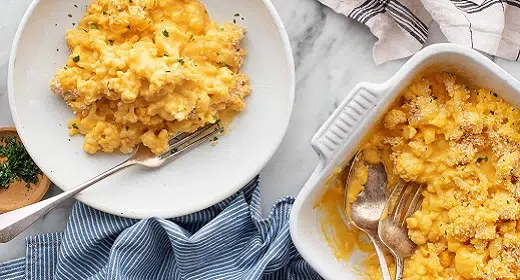by Ocean Robbins: If you want to know where humanity has been and where we’re going, look to the yeasts…
We are proud to announce a new partnership with John and Ocean Robbins and the Food Revolution to bring our readers Summits, Seminars and Masterclasses on health, nutrition and Earth-Conscious living.
Sign Up Today For the Healthy Brain Masterclass
Single-celled members of the fungus family, yeasts were among the first organisms we domesticated once we discovered their ability to turn carbohydrates into alcohol and carbon dioxide. We drank the former and made bread rise with the latter.
Yeasts have also pointed to our future. The first nonbacterial organism to have its genome fully sequenced was Saccharomyces cerevisiae, the yeast that’s used to make bread, beer, and wine. Geneticists accomplished this feat in 1996, a full 10 years before the same technology cracked the human genome.
And then there’s nutritional yeast — also of the Saccharomyces cerevisiae clan — affectionately referred to as “nooch.” I know quite a few people who view it as at least as important as beer, wine, and bread — if not more so. And that’s because nutritional yeast has the ability to impart a delicious, nutty-cheesy flavor to plant-based dishes.
The History of Nutritional Yeast
Nutritional yeast entered the food supply in the 1920s when yeast manufacturers were worried about the shrinking market caused by the advent of store-bought bread. They commissioned a marketing campaign touting deactivated yeast as a health food, one that could be ingested directly (sprinkled on food or dissolved in a beverage).
In addition to the flaked product, yeasts were incorporated into health spreads such as Marmite (UK) and Vegemite (Australia), which are either beloved with a fervor bordering on fanaticism or reviled as tasting like salty axle grease. Regardless of taste, the spreads immediately appeared to improve public health — in the 1930s, the folic acid provided by Marmite treated anemic mill workers in Mumbai (then Bombay) and Sri Lankans suffering from malaria.
Nutritional yeast rode the coattails of the hippie vegetarian movement of the 1970s, thanks in part to Bob’s Red Mill company, which fortified the stuff with a bunch of B vitamins, including B12, and marketed it as a health supplement that provided meat-abstainers with the nutrients they might otherwise be missing.
And more recently, nooch has gone mainstream. The increased popularity of vegan and plant-based diets has helped, along with an appreciation for its unique taste by many culinary influencers. More and more, nutritional yeast is appearing as an ingredient in both plant-based and non-plant-based restaurants and dishes.
If you’re unfamiliar with nooch, you may be wondering what it looks or tastes like, and how to use it. If you’re already a fan, you’re probably eager to discover new uses for the delicious golden flakes. In this article, we’ll show you several different ways to use nutritional yeast, and end with seven delicious nutritional yeast recipes that will allow you to put that nooch to good use.
What Is Nutritional Yeast?
Nutritional yeast is a food product typically used as a seasoning, although you might also think of it as a flavorful dietary supplement. It’s made by growing the yeast Saccharomyces cerevisiae on some sugar source — usually cane or beet molasses. FYI: Some sugar beets used to make molasses may be bioengineered (BE); if you want to avoid BE (also known as genetically modified) nooch, look for certified non-GMO or organic nutritional yeast brands.
Once fermented, the yeast is harvested, washed, pasteurized, and dried. These last two steps deactivate the yeast, meaning that it can no longer leaven bread or ferment hops into beer.
Nutritional yeast contains a wide variety of important nutrients. Non-fortified nooch contains a variety of B vitamins, protein (a whopping eight grams per serving — or about a tablespoon and a half), and varying amounts of sodium, potassium, iron, calcium, and other minerals. Some nooch also contains vitamin B12, which can be challenging to get on a plant-based diet, along with higher amounts of other nutrients.
If you’re hankering for a deep dive into the health benefits (and any downsides) of nutritional yeast, check out FRN’s comprehensive article on the health effects of nutritional yeast.
What Does Nutritional Yeast Taste Like & Look Like?
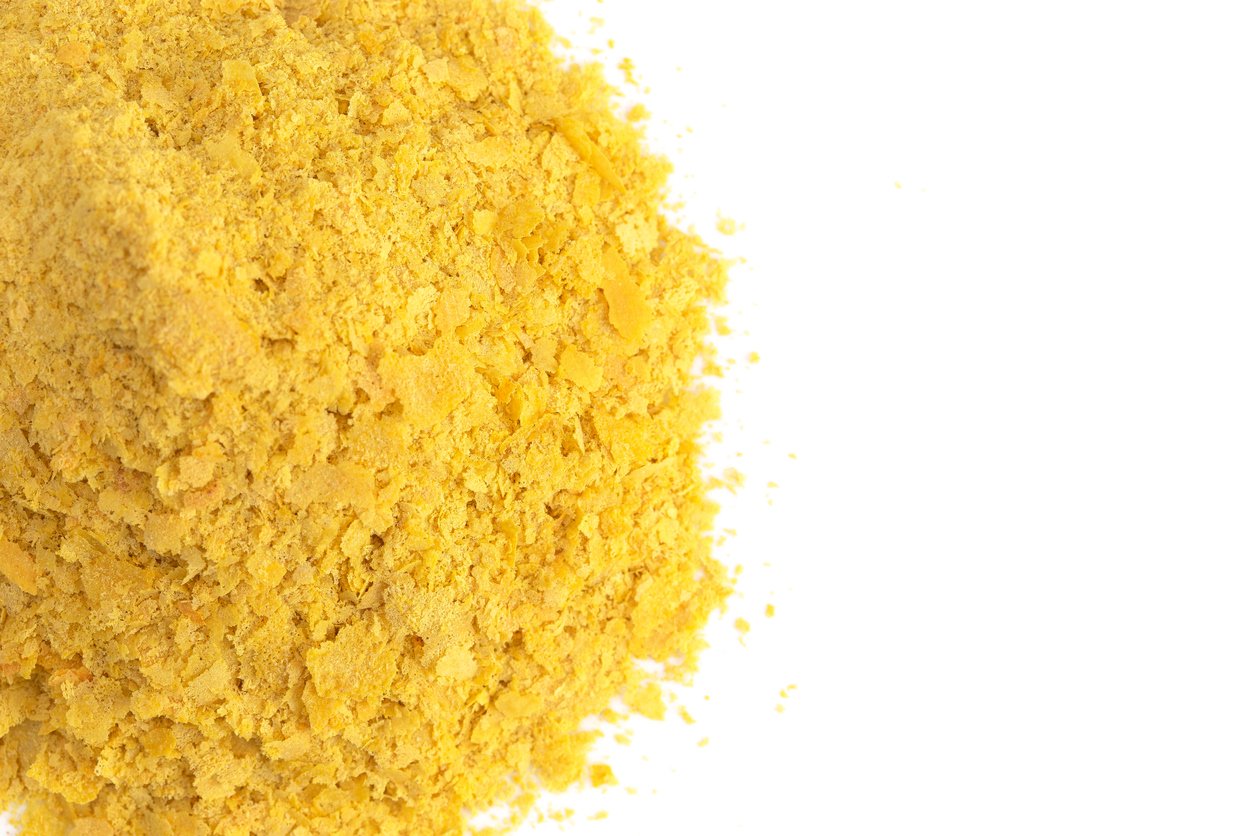
Despite growing on a sweet medium, the resulting yeast isn’t itself sweet. Instead, it has a savory, umami flavor. Nutritional yeast has been described as having a “cheesy” or “nutty” flavor. That said, you’re not likely to mistake it for cheddar or pecans. Rather, nooch may remind your taste buds of other umami foods due to the tang of fermentation combined with its salt content.
Some nutritional yeast brands have even added flavors to it in order to promote its use as a seasoning. For example, Bragg offers garlic and smoky BBQ flavored nutritional yeasts.
Nutritional yeast can look like little flakes (think “fish food,” but for humans), crumbs, or sometimes a finer powder. Its traditional yellow hue derives from its B vitamin content, although some brands sport more of a tan or light brown color. You can buy it in bags, as well as shaker bottles.
For best results, store your nooch in an airtight container, where it can last for up to two years.
How to Use Nutritional Yeast
Nooch’s uses are limited only by your imagination. Riffing on the fact that it’s got something of a cheesy flavor, you can substitute nutritional yeast for dairy products like grated parmesan or romano cheese. Anywhere someone might use a parmesan shaker that you’d find at the table of a pizzeria, you can shake some nooch. Liberally sprinkle the magic yellow flakes on plant-based pizzas, pasta dishes, salads, soups, and so on.
You can also add your own seeds, nuts, herbs, and spices to your nutritional yeast recipe (for a parmesan substitute). For example, you can simulate the fattiness of cheese by grinding your nooch in a food processor along with toasted cashews, sunflower seeds, or sesame seeds. Create a pleasing flavor by adding garlic powder, smoked paprika, or ground caraway, fennel, or cumin seeds — or pretty much any spice that strikes your fancy.
You can also take advantage of nooch’s taste and texture by using it as a base or flavoring in homemade nut cheeses, as well as plant-based cheese sauces, spreads, or dips such as queso or a spinach artichoke dip.
Nooch makes a great popcorn seasoning, too. You can get it to stick by spritzing the popped kernels with a bit of Bragg Aminos or tamari (or olive oil) before shaking it over the bowl. It also peps up crunchy chickpeas and kale chips, and can be added to homemade crackers to mimic a Cheez-It or Nut Thin.
Nooch is your friend when it comes to savory breakfasts. You can stir it into a savory oatmeal bowl and mix it into a breakfast hash consisting of diced potatoes and other veggies. Both its flavor and color complement tofu scrambles, and you can simply sprinkle it on avocado toast.
And nutritional yeast recipes and uses just get better as the day goes on. You can easily incorporate it into lunch and dinner dishes such as casseroles, veggie burgers, dinner loaves, or as a topping for stuffed potatoes. Nooch is also great for breading tofu, cauliflower, and broccoli that’s going in an air fryer.
Because it’s so flavorful and lightweight, nutritional yeast makes an excellent condiment for travel. If you’re concerned about finding healthy food on the road, a shaker of nooch can turn even bland steamed veggies into a yummy dish. (And if you also bring a squeeze bottle of sriracha, you can spice up just about anything that’s edible. Possibly even a cardboard box, although I don’t recommend trying it.)
Nutritional Yeast Recipes
Nutritional yeast is a versatile and transformative flavor agent that brings the beloved “cheesy” umami flavor to plant-based cooking without the potentially harmful side effects that come with dairy cheese. We’re sharing the seven nutritional yeast recipes below (plus the ones scattered throughout the article!) because, well, they’re delicious (and we’re not just saying that because we created them). And because they showcase a range of dishes in which nooch really takes things up a notch. With a savory breakfast polenta, a smoky kale salad, three plant-based versions of what, for many, are childhood classics, and finishing up with a condiment and sauce, you might just use nutritional yeast on everything (ok, almost everything — I don’t recommend it on chocolate cake, and I speak from experience on this one!). Your nutritional yeast recipe library is now open!!
1. Savory Breakfast Polenta with Mushrooms and Arugula
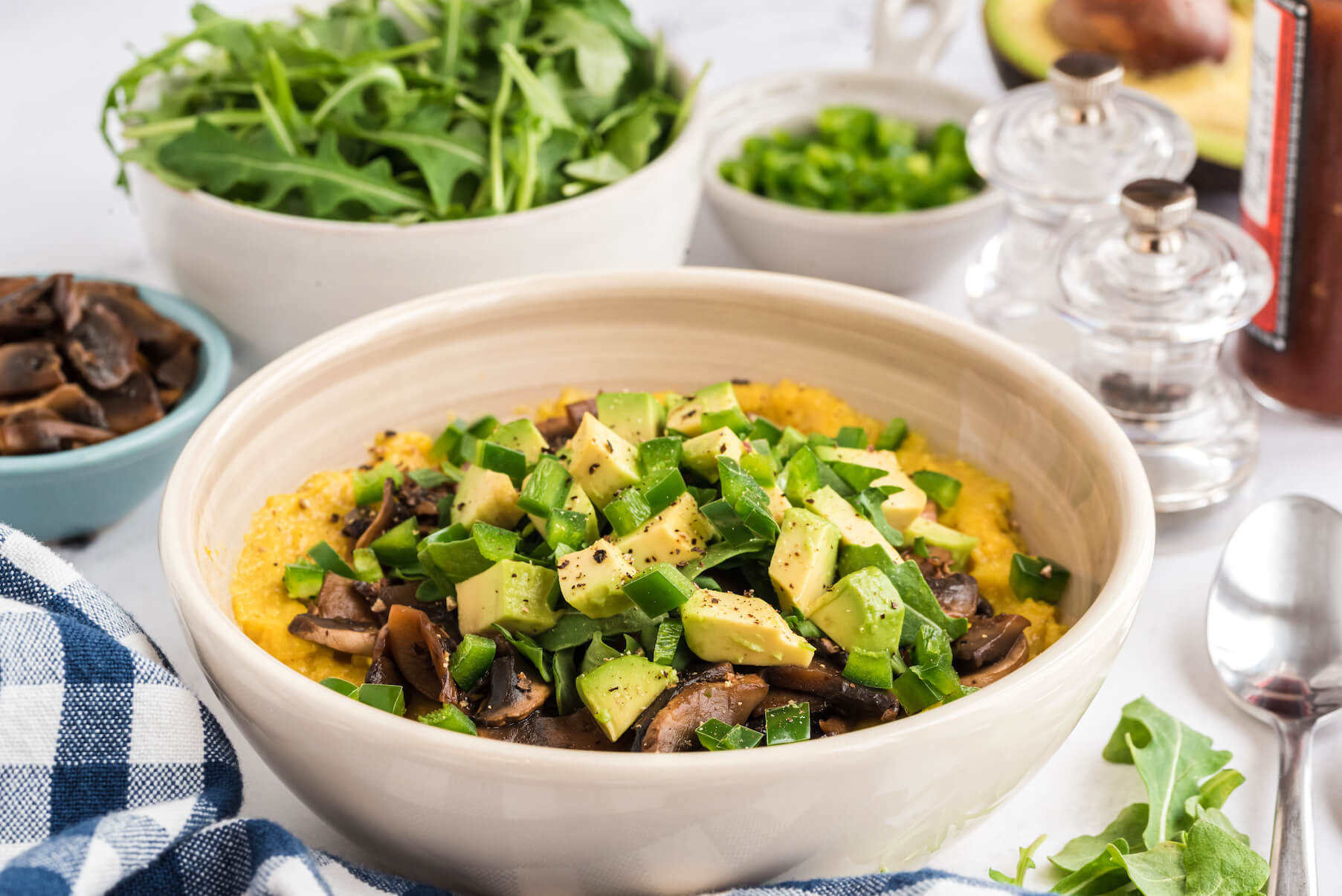
Polenta is made from finely ground yellow corn and cooked as a breakfast cereal with milk, butter, and cheese. This plant-based version offers that same creamy, silky, and cheesy flavor, but without some potentially harmful ingredients. Plus, nutritional yeast helps boost the nutritional profile of this meal with added plant-based protein, B vitamins, and trace minerals. When consumed with antioxidant- and mineral-rich greens, you’ve got a meal that will help you feel unstoppable!
2. Smoky and Cheesy Kale Salad

These cheesy golden flakes make a lusciously creamy, zesty, and tangy salad dressing when combined with tahini, lemon juice, and savory spices. Tossing it with earthy and slightly sweet kale makes for one of the most delicious salad experiences yet!
3. Spinach Artichoke Dip
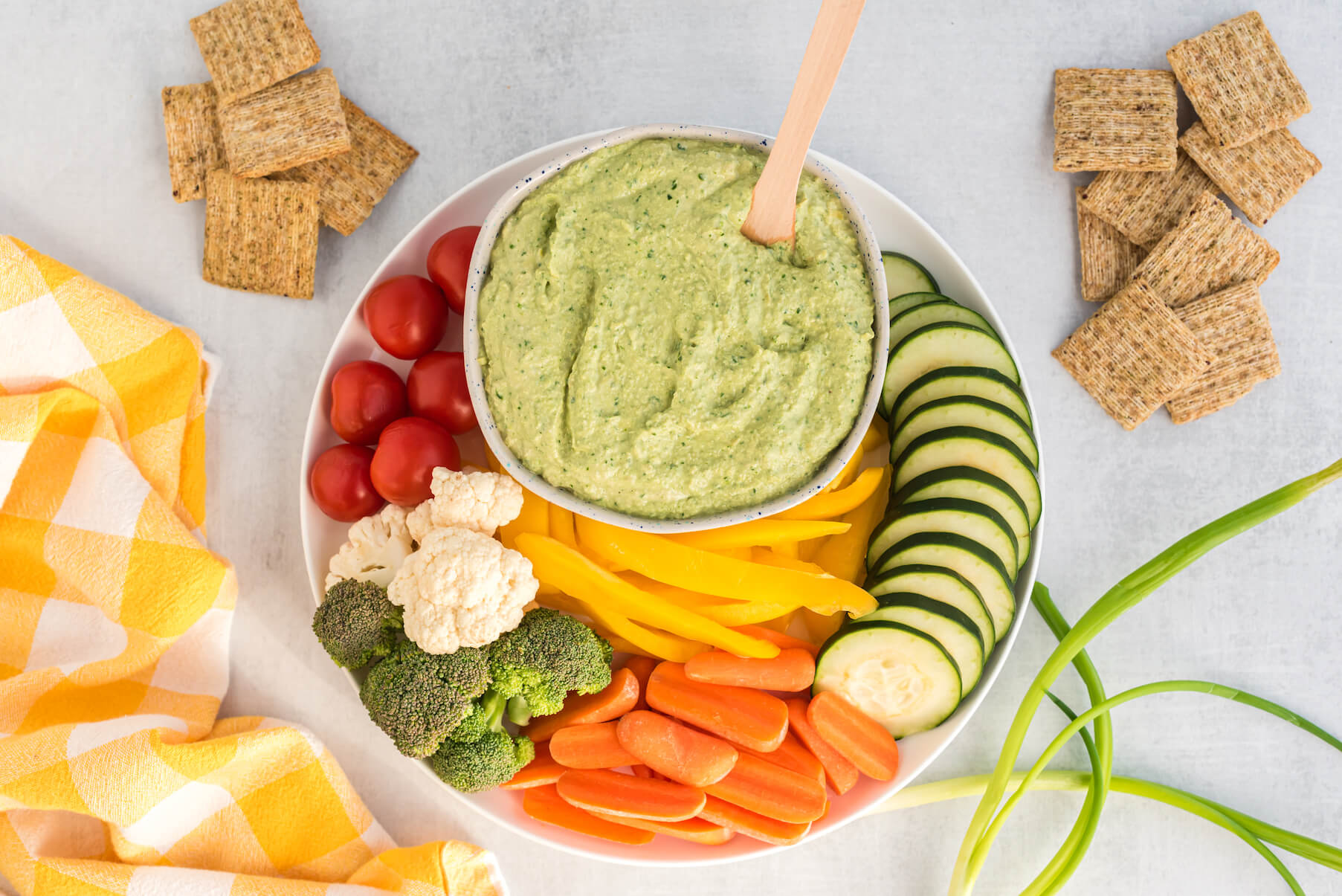
Nutritional yeast elevates the flavor in our plant-based take on this classic, ooey-gooey dip. Not only is it pretty irresistible, but it also delivers prebiotic fiber and nutrient-rich minerals — such as magnesium, potassium, copper, and zinc — in every delicious umami bite. Serve this nutritional yeast-filled recipe as a veggie dip, spread it on flatbread, or layer it with potatoes and then bake it as a casserole.
4. Broccoli and Tomato Pasta Bake
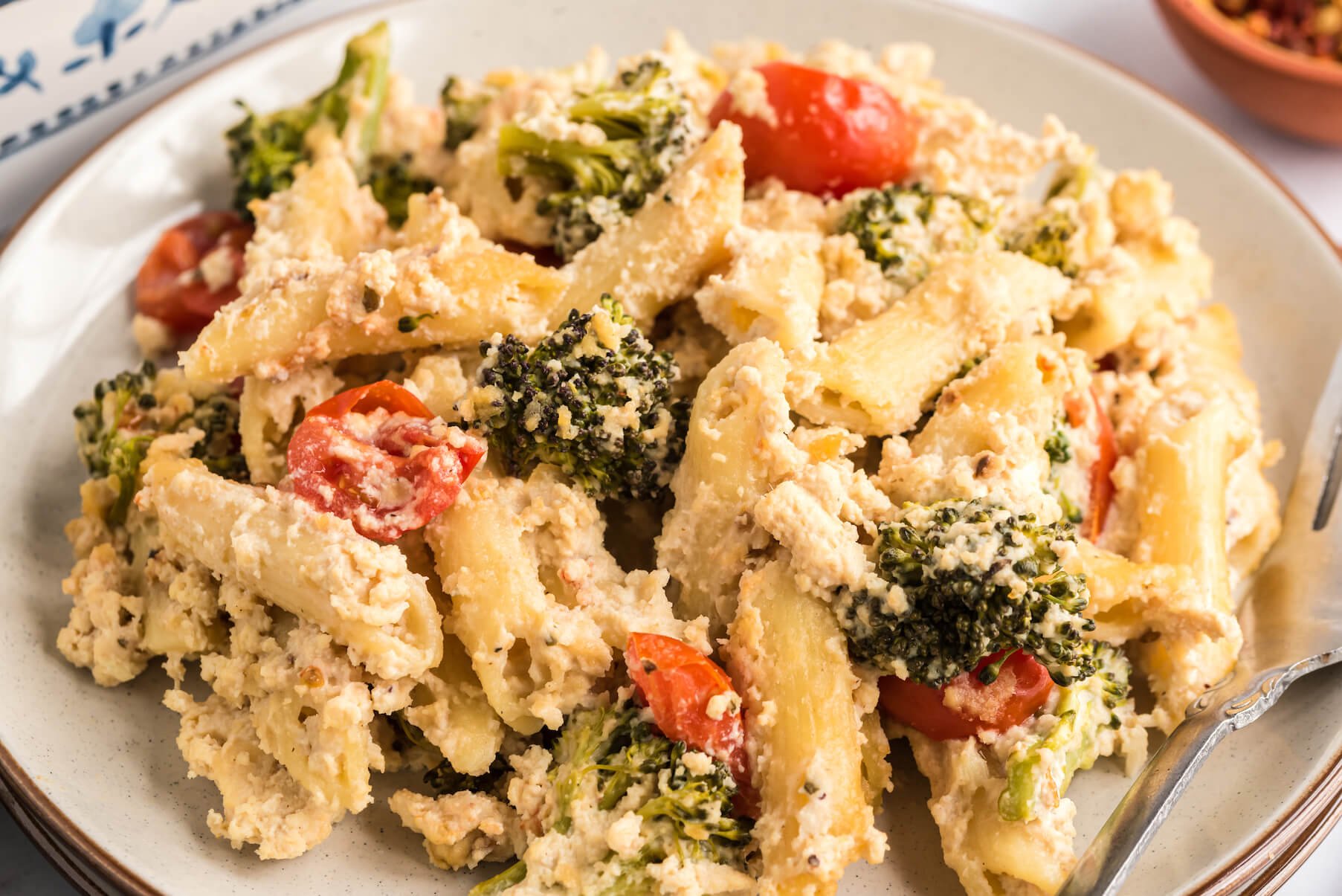
What’s not to love about a rich and cheesy pasta dish? In our pasta bake, nutritional yeast complements the sweet and savory tones of broccoli and tomato to create a captivating combination of textures, flavors, and nutrients. We encourage you to add other veggies that you know the family will love as well — after all, this recipe is likely going to be in continuous rotation!
5. Chili Mac ‘n Cheese
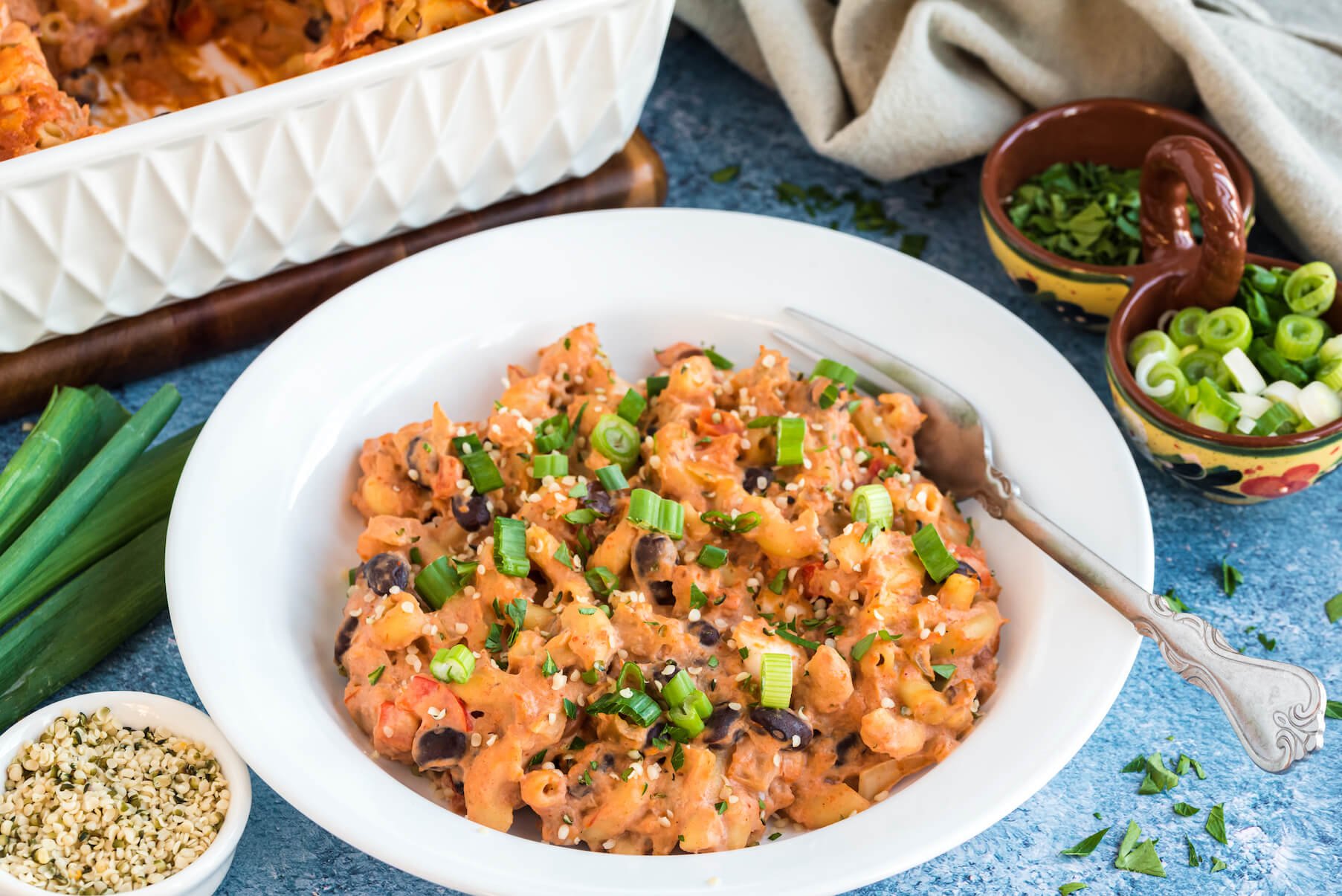
New to nutritional yeast? This one’s for you. Nooch lover? This recipe is for you — and your recipe library, too! Turn to your pantry for whole grain or legume macaroni, cashews (or raw sunflower seeds), nutritional yeast, black beans, refried beans, and plenty of spices. Making this Chili Mac ‘n Cheese will give you a direct experience of what it’s like to create a mouth-watering, plant-based nutritional yeast recipe!
6. 3-Ingredient 2-Minute Cheesy Topping
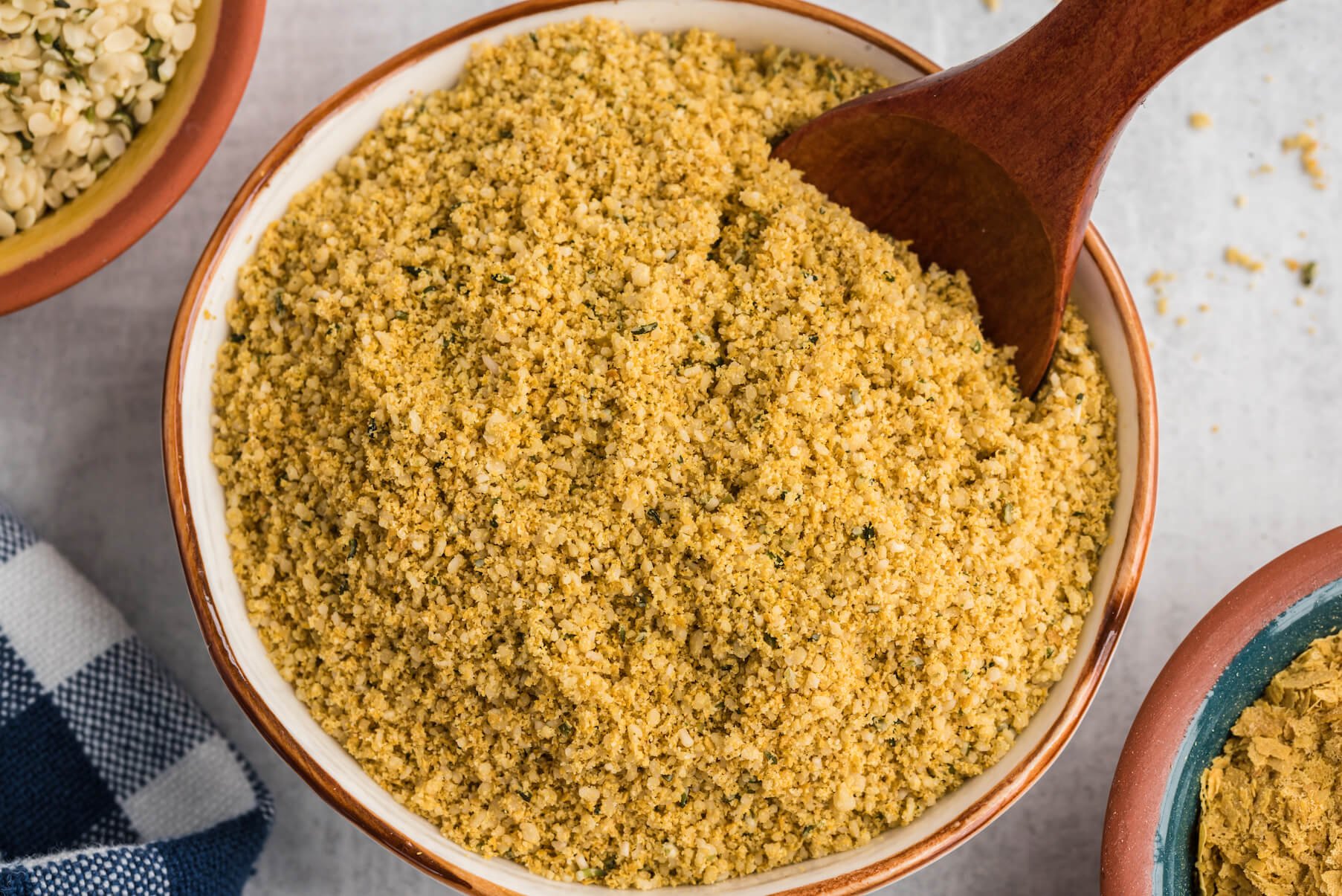
One of the top concerns we hear about going plant-based is the notion of giving up cheese. This 3-Ingredient 2-Minute Cheesy Topping makes ditching cheese for plants a piece of (plant-based) cake! Not only is it simple to make, but it’s bursting with umami flavor from the garlic and nutritional yeast — and richness from the hemp seeds. Sprinkle this nooch mixture on top of soup, pasta, salads, grain bowls, or anywhere you’re craving cheesy goodness!
7. Cheesy Cashew Sauce
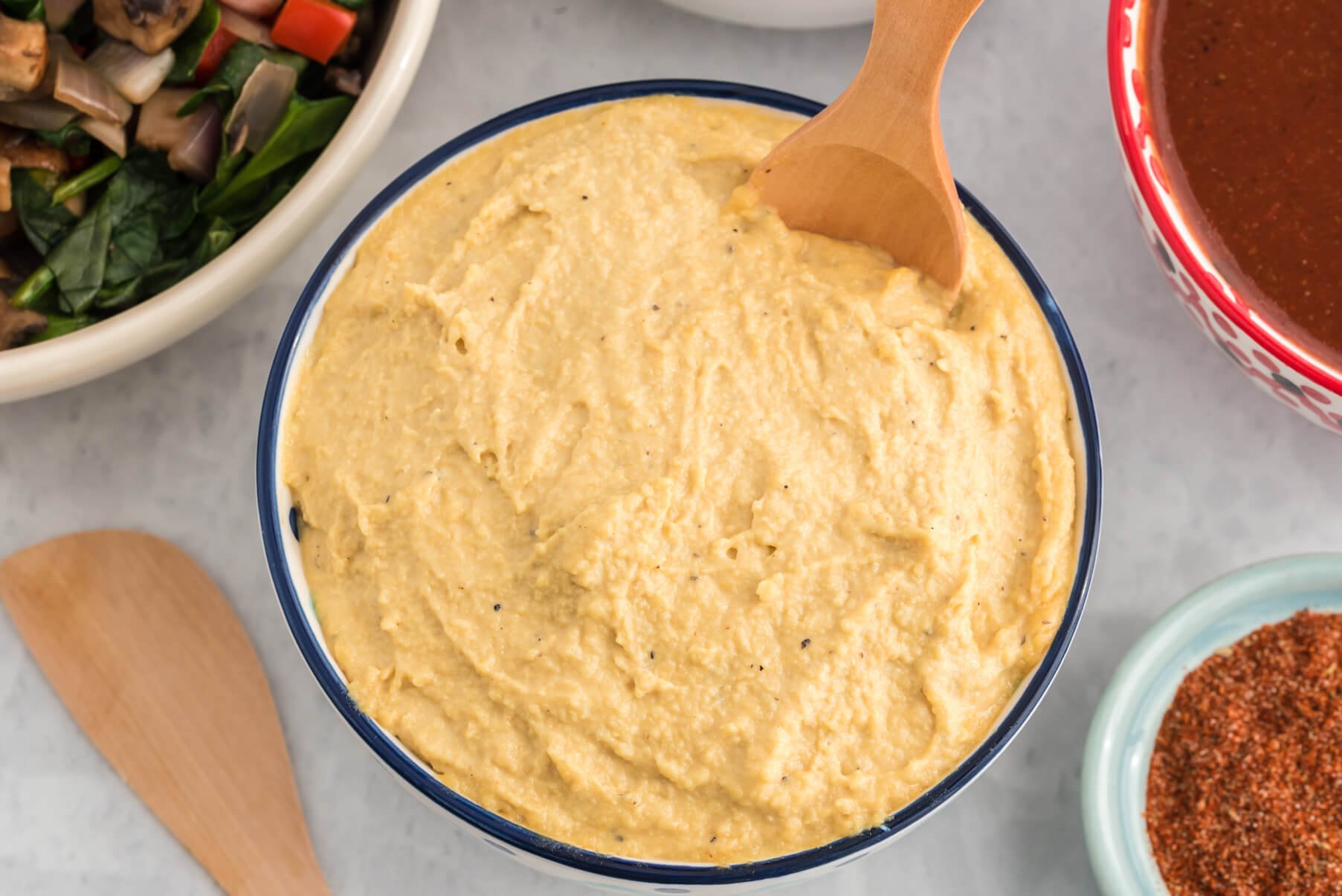
What do you get when you blend creamy cashews, tart lemon juice, and savory spices with nutritional yeast? The ultimate cheesy sauce, of course! It’s also another recipe to turn to when dairy cravings strike — it, along with our Cheesy Topping, is on our always-have-on-hand list, so we won’t be surprised if they become go-tos for you, too!
You Can Use Nooch on Almost Anything
Nutritional yeast is a delicious addition to many dishes, both as an ingredient and a seasoning. Not only does it add rich umami flavor and vibrant color to recipes, but it also delivers a bunch of important nutrients. And it’s a great source of plant-based protein.
There are many ways to use nutritional yeast in recipes, from savory breakfasts to salty snacks. In addition to the suggestions and recipes we’ve shared here, I hope you enjoy playing with your food and trying out new and creative uses for this wonderful gift from the fungus kingdom.







